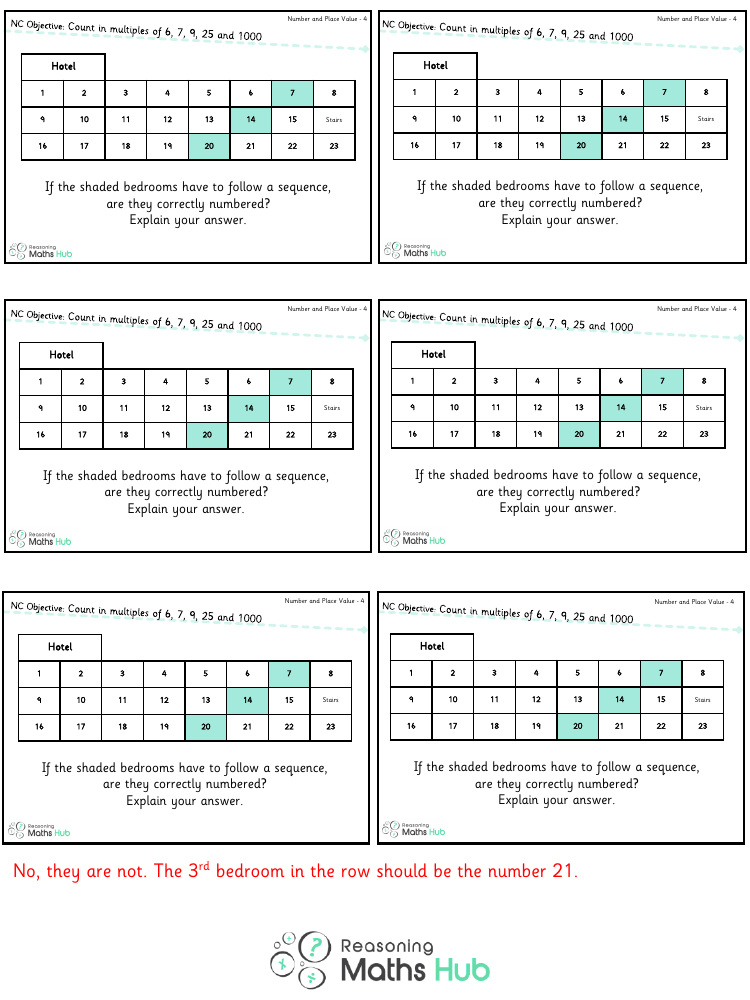Count in multiples of 6, 7, 9, 25 and 1000 4 - Reasoning

Maths Resource Description
In a reasoning task focused on number sequences and place value, students are presented with the layout of a hotel's bedrooms and asked to determine if the shaded rooms follow a correct numerical sequence. The bedrooms are numbered consecutively from 1 to 23, with a row of rooms on each floor. The task requires students to identify if the shaded rooms, which are supposed to be in sequence, are indeed numbered correctly within the overall pattern of the hotel's layout.
Upon examination of the sequence of room numbers, it becomes apparent that the shaded bedrooms do not follow the correct sequence. The sequence should be consistent, allowing for the identification of a pattern or rule that the shaded rooms would adhere to. In this case, the third shaded bedroom in the row is numbered 20, but for the sequence to be correct, it should be numbered 21. This discrepancy indicates that there is an error in the numbering, which does not align with the expected sequence. Students are expected to explain their reasoning by identifying this inconsistency and articulating why the current numbering does not follow the sequence rule that has been established for the shaded bedrooms.